Abstract
The lack of efficient systems for the propagation of the hepatitis C virus in vitro, in the past decade, led to the development of several heterologous expression systems for the study of the HCV proteins and the HCV life cycle. HSV- 1 amplicon vectors encoding the HCV structural and some of the non structural proteins were generated initially for the expression of high levels of these proteins into mammalian cells. The recent developments in the production of amplicon vectors, allowing the elimination of the contaminating helper HSV-1 virus have given a novel impulse in the study of these vectors as possible vaccine candidates. In this review, an extensive list of the existing amplicon vectors expressing HCV proteins is provided, together with a brief overview of the results obtained by these studies.
Keywords: HCV core protein, NS3/4A, CE1E2p7, viral replication complex, naked core particles
Current Gene Therapy
Title: HSV-1 Based Amplicon Vectors as an Alternative System for the Expression of Functional HCV Proteins
Volume: 6 Issue: 3
Author(s): Eliza Tsitoura, Urania Georgopoulou and Penelope Mavromara
Affiliation:
Keywords: HCV core protein, NS3/4A, CE1E2p7, viral replication complex, naked core particles
Abstract: The lack of efficient systems for the propagation of the hepatitis C virus in vitro, in the past decade, led to the development of several heterologous expression systems for the study of the HCV proteins and the HCV life cycle. HSV- 1 amplicon vectors encoding the HCV structural and some of the non structural proteins were generated initially for the expression of high levels of these proteins into mammalian cells. The recent developments in the production of amplicon vectors, allowing the elimination of the contaminating helper HSV-1 virus have given a novel impulse in the study of these vectors as possible vaccine candidates. In this review, an extensive list of the existing amplicon vectors expressing HCV proteins is provided, together with a brief overview of the results obtained by these studies.
Export Options
About this article
Cite this article as:
Tsitoura Eliza, Georgopoulou Urania and Mavromara Penelope, HSV-1 Based Amplicon Vectors as an Alternative System for the Expression of Functional HCV Proteins, Current Gene Therapy 2006; 6 (3) . https://dx.doi.org/10.2174/156652306777592018
| DOI https://dx.doi.org/10.2174/156652306777592018 |
Print ISSN 1566-5232 |
| Publisher Name Bentham Science Publisher |
Online ISSN 1875-5631 |
Call for Papers in Thematic Issues
Programmed Cell Death Genes in Oncology: Pioneering Therapeutic and Diagnostic Frontiers (BMS-CGT-2024-HT-45)
Programmed Cell Death (PCD) is recognized as a pivotal biological mechanism with far-reaching effects in the realm of cancer therapy. This complex process encompasses a variety of cell death modalities, including apoptosis, autophagic cell death, pyroptosis, and ferroptosis, each of which contributes to the intricate landscape of cancer development and ...read more
 2
2
- Author Guidelines
- Bentham Author Support Services (BASS)
- Graphical Abstracts
- Fabricating and Stating False Information
- Research Misconduct
- Post Publication Discussions and Corrections
- Publishing Ethics and Rectitude
- Increase Visibility of Your Article
- Archiving Policies
- Peer Review Workflow
- Order Your Article Before Print
- Promote Your Article
- Manuscript Transfer Facility
- Editorial Policies
- Allegations from Whistleblowers
- Announcements
Related Articles
-
Molecular Insights and Therapeutic Targets in Amyotrophic Lateral Sclerosis
CNS & Neurological Disorders - Drug Targets Human Immunodeficiency Virus-Associated Malignancies: A Therapeutic Update
Current HIV Research Medicinal and Cosmetic Potentials of Sophorolipids
Mini-Reviews in Medicinal Chemistry Tumor Promoters - Microcystin-LR, Nodularin and TNF-α and Human Cancer Development
Anti-Cancer Agents in Medicinal Chemistry Nucleoside Phosphorylases
Current Organic Chemistry <I>Prunus Armeniaca L</I>. Seed Extract and Its Amygdalin Containing Fraction Induced Mitochondrial-Mediated Apoptosis and Autophagy in Liver Carcinogenesis
Anti-Cancer Agents in Medicinal Chemistry Nanotechnology, A Tool for Diagnostics and Treatment of Cancer
Current Topics in Medicinal Chemistry An Overview on 2-arylquinolin-4(1H)-ones and Related Structures as Tubulin Polymerisation Inhibitors
Current Topics in Medicinal Chemistry Biosafety Challenges for Use of Lentiviral Vectors in Gene Therapy
Current Gene Therapy Toxicogenomics to Evaluate Endocrine Disrupting Effects of Environmental Chemicals Using the Zebrafish Model
Current Genomics The Akt Pathway: Molecular Targets for Anti-Cancer Drug Development
Current Cancer Drug Targets The Effects of 5-Aza-2`-Deoxycytidine on DLC-1 Gene Expression, Methylation Level and Expression of Downstream Signaling Molecules Cdc42 in Multiple Myeloma
Current Signal Transduction Therapy New Tubulin Polymerization Inhibitor Derived from Thalidomide: Implications for Anti-Myeloma Therapy
Current Medicinal Chemistry Infrared-Spectroscopy: A Non-Invasive Tool for Medical Diagnostics and Drug Analysis
Current Medicinal Chemistry Liver Stem Cells: From Preface to Advancements
Current Stem Cell Research & Therapy In Vivo Imaging of Apoptosis in Cancer: Potentials and Drawbacks of Molecular Probes
Current Molecular Imaging (Discontinued) Targeting Vesicle Trafficking: An Important Approach to Cancer Chemotherapy
Recent Patents on Anti-Cancer Drug Discovery Recent Advances in Superparamagnetic Iron Oxide Nanoparticles for Cellular Imaging and Targeted Therapy Research
Current Pharmaceutical Design Interferon-Alpha in the Treatment of Multiple Myeloma
Current Drug Targets The Prevalence of Hepatitis C Virus Among Blood Donors Attending Samarra's General Hospital
Infectious Disorders - Drug Targets












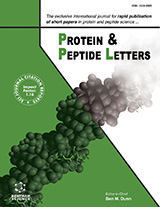
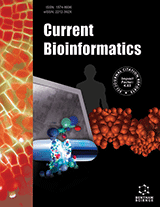
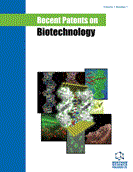
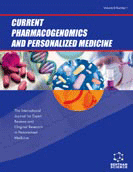
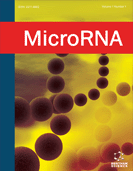
.jpeg)








